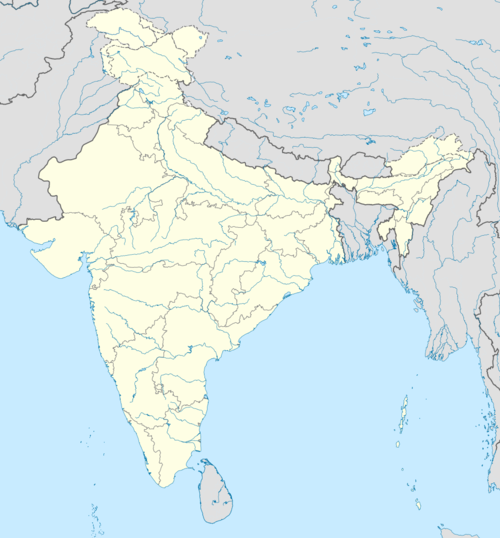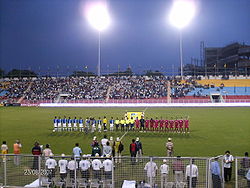 | |
| Organising bodies | All India Football Federation [1] |
|---|---|
| Founded | 21 October 2013 |
| Country | India |
| Confederation | AFC |
| Number of clubs | 14 |
| Level on pyramid | 1 |
| Domestic cup(s) | AIFF Super Cup Durand Cup |
| International cups | |
| Current champions | Mohun Bagan (2nd title) (2024–25) |
| Most championships | Mohun Bagan Mumbai City (2 titles each) |
| Most appearances | Amrinder Singh (186) |
| Top scorer | Sunil Chhetri (74) |
| Broadcaster(s) |
|
| Website | indiansuperleague.com |
| Current: 2025–26 Indian Super League | |
The Indian Super League (ISL) is a professional association football league in India and the highest level of the Indian football league system. Administered by the All India Football Federation (AIFF) [2] [3] the league is currently contested by 14 teams. It operates on a system of promotion and relegation with the I-League from the 2025–26 season.
Contents
- History
- Origins
- Foundation
- Recognition and expansion (2014–2021)
- Sole top-tier league status (2022–present)
- Competition format
- Regular season
- ISL Cup playoffs
- Continental qualification
- Other competitions
- Vision 2047
- Clubs
- 2025–26 season
- Timeline
- Championships
- League and ISL Cup titles by years
- League and ISL Cup titles by clubs
- Ownership
- Sponsorship and revenues
- Media coverage
- Television ratings
- Broadcasters
- Stadiums
- Coaches
- Players
- Appearances
- Transfer regulations and foreign players
- Top scorers
- Wages
- Awards
- Trophy
- League Winners Shield
- Individual awards
- Partnerships
- See also
- Prize money
- References
- External links
The season usually runs from September to April and includes a 26-round regular season followed by the ISL Cup playoffs involving the top six teams, culminating with the ISL Cup final. The bottom team are relegated from the top tier.
The winners of the ISL Cup final are considered the ISL Cup Winners, while the League Winners' Shield is awarded to the ISL champions (the team finishing first in the league table).
ISL clubs qualify for the Asian continental club competitions; League Shield winners qualify directly for the subsequent season's AFC Champions League Two group stage.
The competition was founded on 21 October 2013 to grow the sport of football in India and increase its exposure in the country. Play began in October 2014 with eight teams. During its first three seasons, the competition operated without official recognition from the Asian Football Confederation (AFC), the governing body for the sport in Asia. It was structured along the same lines as the Indian Premier League, the country's premier Twenty20 franchise-based cricket competition. Each season lasted just three months, from October to December, and matches were held daily. However, before the 2017–18 season, the league expanded to ten teams with Jamshedpur FC and Bengaluru FC joining in, expanded its schedule to six months, and earned recognition from the AFC. Mohun Bagan and East Bengal joined the league in 2020–21 season. With ATK disbanding, the 2020–21 season had 11 clubs competing.
The ISL attained the sole top-tier league status from the 2022–23 season, with the I-League demoted to the second tier. The 2023–24 season saw a promoted team from the I-League participating in the ISL for the first time ever. Punjab FC, as the 2022–23 I-League champions, became the 12th team in the league. In subsequent years, Mohammedan SC and Inter Kashi joined the league as the 13th and 14th clubs respectively as champions of the I-League.
Since the league's inaugural season, six clubs have won the ISL Cup title: ATK (3), Chennaiyin (2), Mumbai City (2), Mohun Bagan (2), Bengaluru FC (1) and Hyderabad FC (1).
Since the introduction of the League Winners' Shield in the 2019–20 season, Mumbai City and Mohun Bagan have won it twice, while FC Goa and Jamshedpur FC have won it once each. In the 2024–25 season, Mohun Bagan became the first team to successfully defend the League Shield. Mohun Bagan also became the first team to earn 50 points or more in the League, setting a record with 56 points in the 2024–25 League season.

















